Clear handwriting improves communication, boosts productivity, and enhances memory retention. Want better handwriting? Start by identifying common issues like inconsistent letter sizes, poor spacing, or uneven angles. Then, focus on these key areas:
Track your progress with handwriting samples and make practice enjoyable by incorporating fun activities like writing quotes or decorating journals. With the right approach and tools, you can refine your handwriting and make your notes both clear and visually appealing.
To improve your handwriting, it’s important to first understand your current writing habits. A detailed review will help you pinpoint specific issues and create a targeted plan for improvement.
Start by writing a sample that includes numbers, punctuation, and both uppercase and lowercase letters. This sample will act as your baseline for tracking progress.
Use the table below to evaluate your handwriting systematically:
| Element to Review | What to Look For |
|---|---|
| Letter Formation & Size | Are the shapes and heights of letters consistent? |
| Spacing | Are the gaps between letters, words, and lines even? |
| Writing Angle | Do the letters slant consistently in the same direction? |
| Line Alignment | Does the text follow a straight baseline? |
Write at your natural pace for an accurate representation of your handwriting style.
After creating your sample, examine it closely to find specific issues that need attention. Here are some common challenges and how to spot them:
| Problem Area | Impact on Writing | How to Identify |
|---|---|---|
| Inconsistent Letter Sizes | Makes writing harder to read | Compare the heights of similar letters like ‘a’, ‘e’, and ‘o’ |
| Uneven Spacing | Creates a cluttered or messy look | Check for irregular gaps between words or letters |
| Variable Slant | Disrupts the flow and appearance | See if all letters lean in the same direction |
| Incomplete Letters | Reduces clarity | Look for missing parts, like uncrossed ‘t’s or undotted ‘i’s |
Keep your samples dated in a notebook to track your progress over time. Focus on improving one issue at a time to stay motivated and avoid frustration. Start with the problem that most affects how readable your writing is.
Before each writing session, try warming up your hand with simple exercises like drawing waves, zig-zags, or mounds. These exercises help strengthen your hand muscles and improve control [3].
Once you’ve pinpointed areas to work on, it’s time to strengthen the fundamental skills that improve control and consistency in handwriting.
Try the ‘tripod grip’: hold the pen between your thumb and index finger, with the middle finger providing support underneath.
Make sure you’re sitting upright with your feet flat on the ground, your arm supported, and your paper slightly angled – 15-20° clockwise for right-handers and counter-clockwise for left-handers.
For left-handers, hold the pen slightly higher and tilt the page about 30° to the right. This helps prevent smudging as you write.
Clear and consistent handwriting depends on uniform letter sizes and proper spacing. Keep letter heights consistent (cap height, x-height, and descenders) and leave about one pen-width of space between letters for better readability.
| Letter Component | Height Guide | Common Issues to Watch |
|---|---|---|
| Cap height | Top line | Uneven capital letters |
| x-height | Middle line | Inconsistent lowercase sizes |
| Descenders | Bottom line | Letters dipping too far below the baseline |
| Letter spacing | One pen width | Letters too close or too far apart |
Apply even, light pressure as you write. This helps create smoother lines and reduces hand fatigue.
To improve flow and readability, aim for a slight forward slant of about 15-20°. Practice writing vertical lines and curves along parallel slant guides to maintain this angle.
Once you’ve got a solid grip, good posture, and consistent letter formation, choosing the right tools can make your handwriting even better.
Having the right tools can make a big difference in your handwriting. Let’s break down some must-have supplies to improve your penmanship.
The pen you use plays a huge role in how your handwriting looks. Here are some top picks based on different writing styles:
| Writing Style | Recommended Pen | Features That Stand Out |
|---|---|---|
| Print Writing | Zebra Sarasa Clip | Multiple tip sizes, ergonomic grip |
| Cursive Writing | Uni-ball Air | Smooth ink flow, works at any angle |
| Small Handwriting | Pilot Hi-Tec-C | Extra-fine tips, great precision |
| Left-Handed Writing | Zebra Sarasa Dry | Quick-drying ink, resists smudging |
For paper, go for 120-160 GSM to avoid ink bleeding and ensure a smooth writing experience. A budget-friendly option is the Stationery Island Bullet Journal (120gsm, $9.99). If you want something more premium, BUKE journals with 180gsm paper deliver excellent quality for $18.59.
To refine your handwriting, you’ll need some practice tools:

Dark Moon Paper offers creative tools like themed sticker kits (try ‘Lilac Dusk’ or ‘Winter Hygge’) and practical planner stickers. These can make your practice sessions more engaging. Use themed stickers to design appealing practice pages, while functional stickers help with spacing and letter alignment.
With these tools, you’ll be well-equipped to make handwriting practice part of your daily routine.
Use your daily routine as a chance to practice handwriting. For example, swap out typing for writing by hand during meetings or lectures.
You can also dedicate specific times of the day – like jotting down plans in the morning, taking notes in the afternoon, or journaling at night – to work on areas like letter spacing, writing speed, or overall style.
Having clear goals can help you stay focused. Start small, like practicing for just 10 minutes a day [1].
Review your progress weekly by comparing handwriting samples. Focus on improving one group of letters at a time and keep a record of your practice sessions.
If you’re just starting, stick to basic letter formation drills. If you’re more experienced, try enhancing your signature style or experimenting with decorative writing techniques.
Add some creativity to your handwriting practice to keep it interesting. For instance, join challenges like the Rock Your Handwriting Challenge on Instagram, which provides daily prompts and exercises [1].
Here are a few enjoyable ways to practice:
These fun activities not only refine your handwriting but also give a personal, artistic flair to your everyday writing projects.
Improving handwriting comes down to consistent practice, proper technique, and focusing on legibility. Pay attention to your grip, maintain a steady writing speed, and aim for clear letter formation.
Using the right tools can make a big difference. Opt for smooth-flowing pens and sturdy, bleed-resistant paper. Thick paper with clear guidelines, as suggested by Tiny Ray of Sunshine‘s handwriting guides, helps keep your letter height and spacing consistent [2].
Once you’ve got the basics down, make handwriting practice a fun and regular part of your day.
Incorporate handwriting practice into your daily routine in a way that feels rewarding. These methods not only improve your skills but also add a personal touch to your journals and planners.
Fun Practice Ideas:
Just 15 minutes a day can lead to noticeable progress. With the right balance of technique, tools, and consistent effort, you’ll develop handwriting that’s both polished and satisfying to use.
Here are answers to common questions about improving handwriting, whether for everyday tasks or creative uses.
Consistent, focused practice helps build the muscle memory needed for better handwriting. Start with simple letter drills, incorporate handwriting practice into daily tasks like jotting down notes, and finish your day with a short journaling session. Keep track of your progress by saving samples and focusing on specific letters or shapes.
Choose quality pens, sit with proper posture, and experiment with different writing angles to achieve smoother, more even letters. When journaling, write slowly and pay close attention to the shape of each letter. Using lined paper or guidelines can help keep your writing neat and consistent.
Creating visually appealing notes requires a bit of preparation and attention to detail.
"The key to beautiful notes is starting with proper preparation. Test your pen, warm up with some practice strokes, and always keep an exemplar of your best writing style nearby for reference", says Courtney Copriviza, Elementary School Teacher [4].
Here are some tips to get the best results:
| Step | Action | Purpose |
|---|---|---|
| 1 | Use a fine-tipped pen | Produces clean, sharp lines |
| 2 | Follow guidelines | Keeps spacing consistent |
| 3 | Leave proper margins | Adds a balanced appearance |
| 4 | Write at a steady pace | Ensures uniformity |
Stickers Made for Planning
Our custom stickers are a fuss-free way to brighten up your planner pages with perfectly-sized designs that add a spark of personality to every layout.
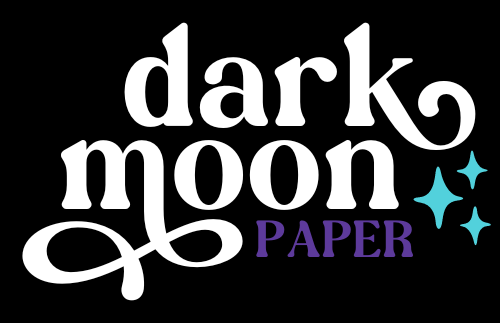
Why use planner stickers?
Planner stickers make organizing easy, fun, and personal! Add color, creativity, and structure to every page, transforming your planner into a tool that reflects you. Perfect for tracking, decorating, and staying inspired daily!
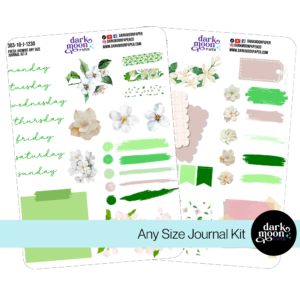
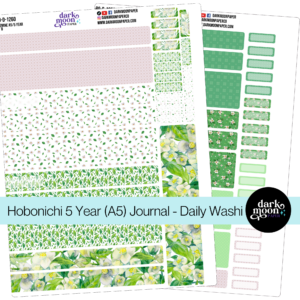
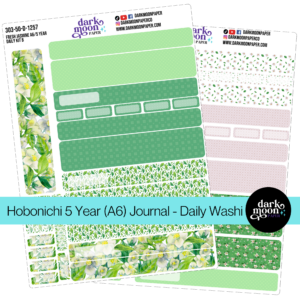
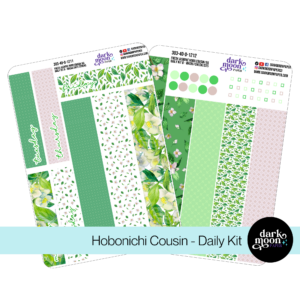
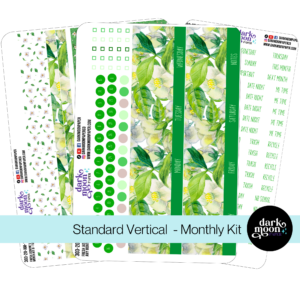
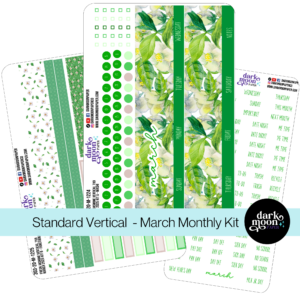
Hello and welcome!
I’m Rachael Snow, a lifelong artist and entrepreneur, and I started Dark Moon Paper to blend my love of art, technology, and the mysterious beauty of the world around us. My sticker kits are meant to set the mood, tell a story, and give you a little escape from the ordinary.
I work from my cozy studio tucked away in the beautiful woods of Oregon, surrounded by nature and a dark night sky full of stars.